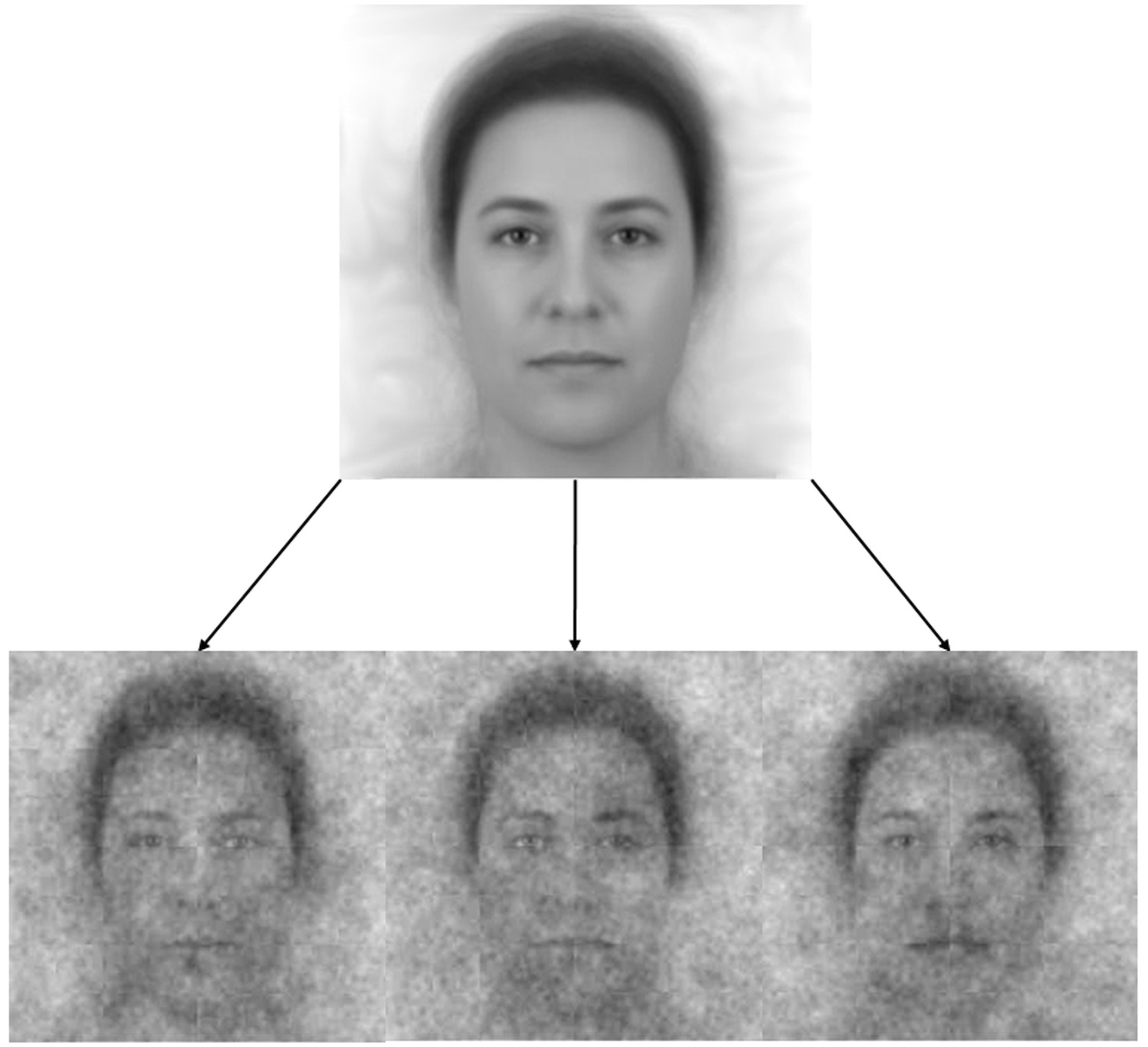US Christians Think God Looks a Lot Like Them

What does God look like? U.S. liberals and conservatives may perceive the Almighty differently, as do young and old people, a new study finds.
Psychologists asked more than 500 U.S. Christians how they perceived God using a new technique. The researchers showed participants hundreds of paired faces and asked the subjects to select the one that looked more like God. By combining the selected faces, the researchers created a composite "face of God" that reflected each of the participants' choices. The researchers analyzed the differences between these composites, and also had 400 people on Mechanical Turk (an online platform that pays people to participate in research) rate the images on nine dimensions, such as age, gender and intelligence.
The results showed that these U.S. Christians tended to view God as young, Caucasian and loving. However, liberals saw God as more feminine, more African-American and more loving than conservatives did. Meanwhile, conservatives, picked faces that were perceived as older, more intelligent and more powerful, the researchers said. [Saint or Spiritual Slacker? Test Your Religious Knowledge]
"These biases might have stemmed from the type of societies that liberals and conservatives want," study lead researcher Joshua Conrad Jackson, a doctoral candidate at the Evolution Institute at the University of North Carolina at Chapel Hill, said in a statement. "Past research shows that conservatives are more motivated than liberals to live in a well-ordered society, one that would be best regulated by a powerful God. On the other hand, liberals are more motivated to live in a tolerant society, which would be better regulated by a loving God."
Historically, God, like beauty, is perceived differently depending on the eye of the beholder. The Book of Exodus in the Hebrew Bible (also known as the Old Testament) says, "You cannot see my face, for no one may see me and live." However, artists from Michelangelo to Monty Python have portrayed God as an old, wise and white-bearded Caucasian man, the researchers noted.

The new study shows that today's U.S. Christians don't always perceive God as this august-looking being. Rather, the people in the study, who were an average age of 47 years old, tended to envision God as they see themselves, the study found. For instance, younger people selected a younger-looking God and people who called themselves physically attractive chose a more physically attractive God, the researchers found. Moreover, African-Americans selected faces that looked more African-American than Caucasians did.
"People's tendency to believe in a God that looks like them is consistent with an egocentric bias," study senior researcher Kurt Gray, an associate professor of psychology at the University of North Carolina at Chapel Hill, said in the statement. "People often project their beliefs and traits onto others, and our study shows that God's appearance is no different — people believe in a God who not only thinks like them, but also looks like them."
Get the world’s most fascinating discoveries delivered straight to your inbox.
However, this egocentric bias didn't extend to gender. Both the men and women in the study believed in a masculine-looking God, the researchers found.
The study had some limitations. The researchers looked at only nine dimensions of God's appearance: age, gender, attractiveness, race, perceived wealth, intelligence, happiness, lovingness and powerfulness. "These dimensions are not meant to be exhaustive, and we encourage future researchers to test for other dimensions of variance using our data, which is publicly available," the researchers wrote in the study.
The study was published online June 11 in the journal PLOS One.
Original article on Live Science.

Laura is the archaeology and Life's Little Mysteries editor at Live Science. She also reports on general science, including paleontology. Her work has appeared in The New York Times, Scholastic, Popular Science and Spectrum, a site on autism research. She has won multiple awards from the Society of Professional Journalists and the Washington Newspaper Publishers Association for her reporting at a weekly newspaper near Seattle. Laura holds a bachelor's degree in English literature and psychology from Washington University in St. Louis and a master's degree in science writing from NYU.
